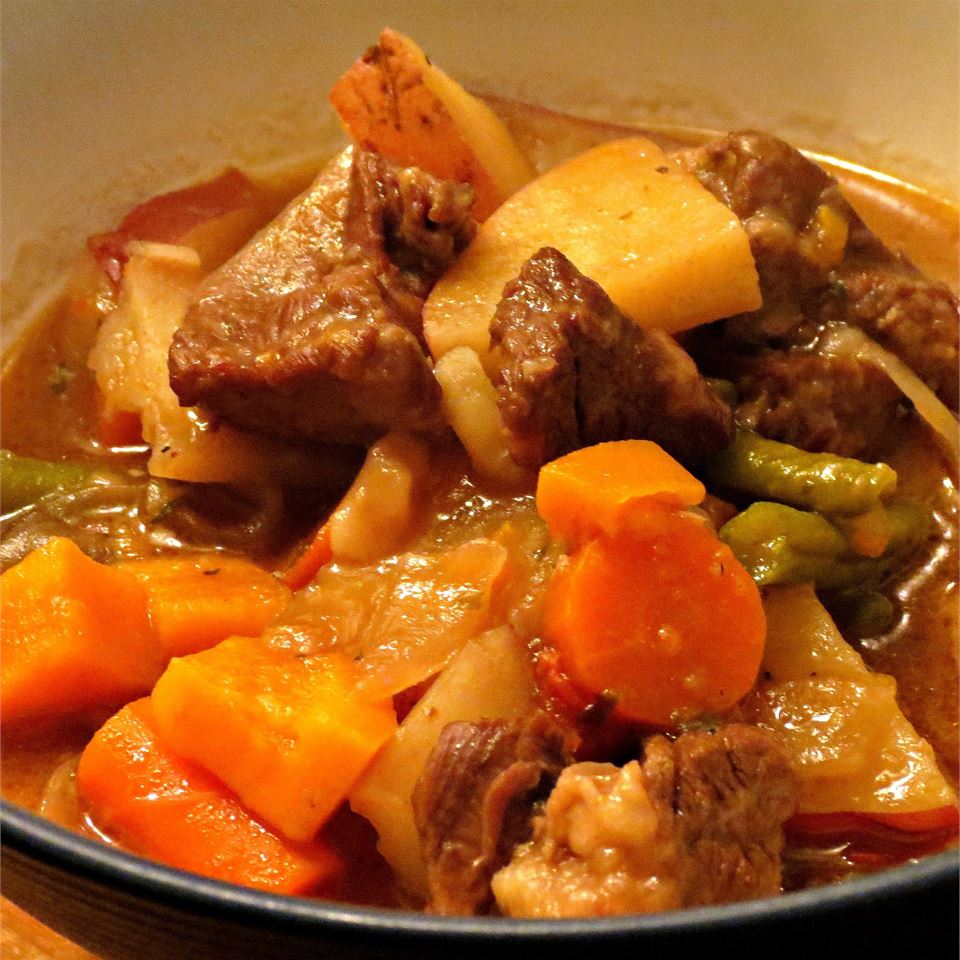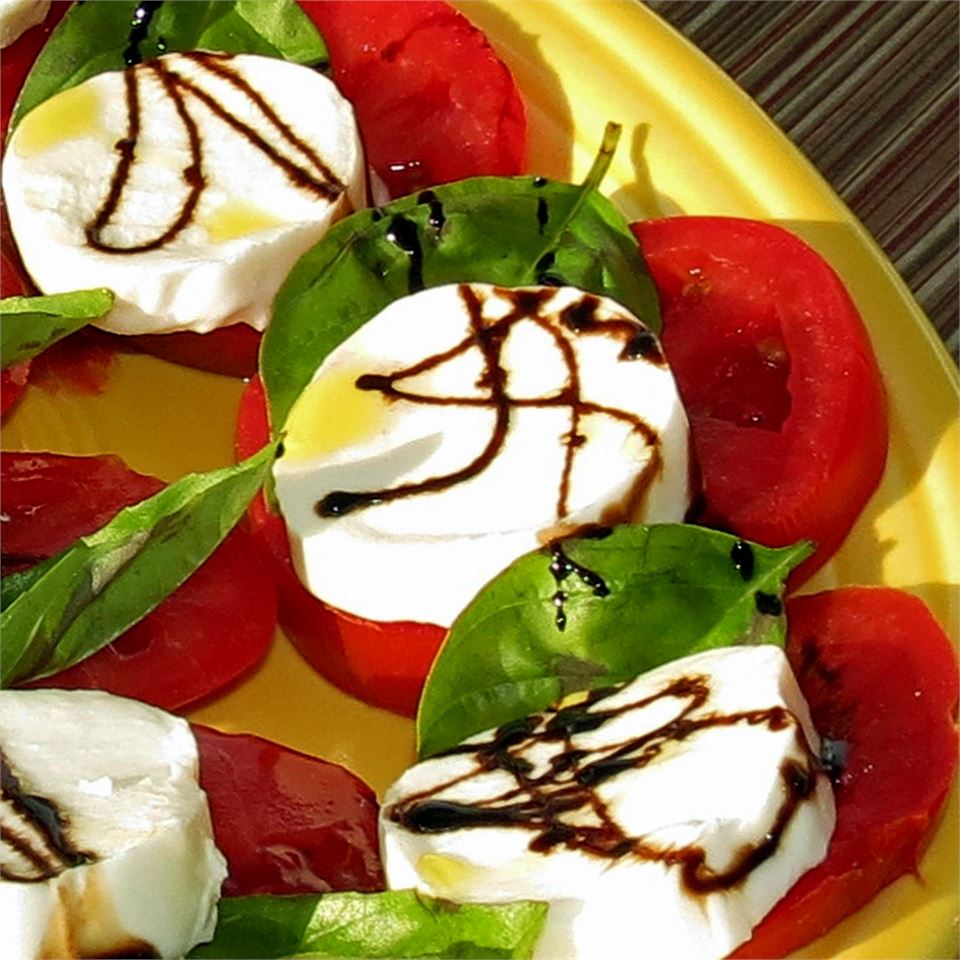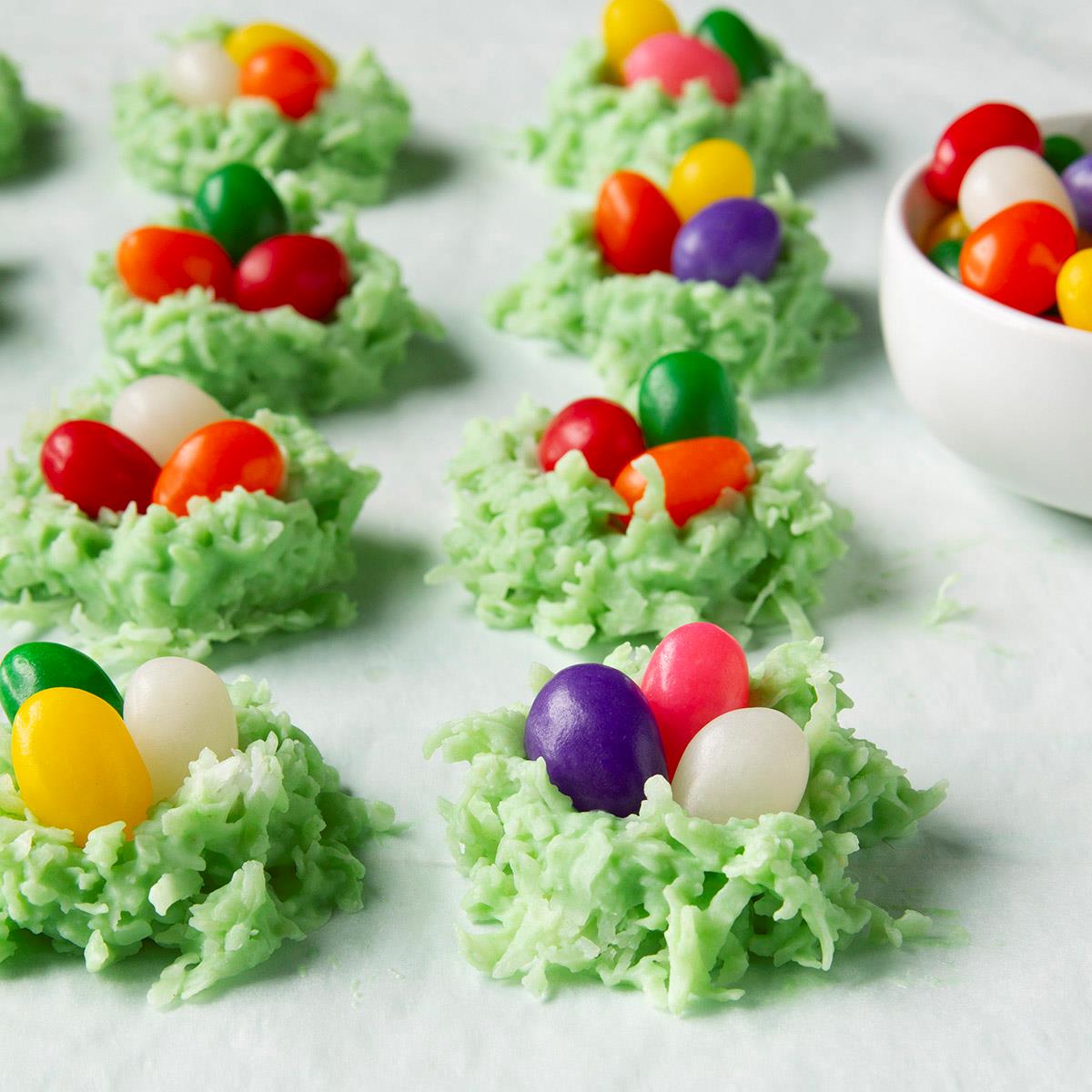Embark on a culinary journey to discover Pasteles Guisados, a delectable and hearty fusion of flavors from Puerto Rican cuisine. These stewed pasteles, wrapped in savory plantain leaves, are a delightful treat for any occasion. Indulge in the rich and savory fillings, ranging from succulent beef, aromatic chicken, and tender pork to a vegetarian medley of vegetables and beans. Each recipe offers a unique symphony of spices, herbs, and seasonings, creating a harmonious balance of flavors that will tantalize your taste buds. Whether you prefer the classic beef filling, the vibrant chicken filling, the hearty pork filling, or the savory vegetarian filling, these Pasteles Guisados promise an unforgettable culinary experience.
Here are our top 6 tried and tested recipes!
PASTELES GUISADOS (PASTELES STEW)
Since trying this recipe about 5-6 years ago, it has become my family's favorite stew. The savory pork coupled with the banana dumplings and spices mimic the tamale-like pasteles to a tee. A good helping of cilantro brings out the rich flavor of the dish for a home run. I have served this over steamed white rice or over gandules...
Provided by Laura Manuel-Arrighi
Categories Other Main Dishes
Number Of Ingredients 22
Steps:
- 1. PREPARE ACHIOTE OIL: Heat olive oil and achiote seeds over medium heat for 5 minutes or just until oil has taken reddish color of seeds. Cool. Store in tightly sealed glass jar. Note: This recipe makes more than what is called for in stew recipe.(I refrigerate mines and kept it until the oil was used up, about 3 months later.)
- 2. PREPARE MASA: Peel bananas and place in lightly salted water (halving them lengthwise and using gloves makes job easier, green bananas leave a sticky sap). Grate on smallest opening of food processor or cheese grater. In bowl, combine grated bananas and 1/2 cup achiote oil and mix thoroughly. Seasoning lightly with salt. Scoop into little balls and drop into salted boiling water until the dumpling float. Once the dumplings float, remove from salted water and fold into the pastele stew. Optional: Store in heavy ziploc bag in refrigerator, and use within 1-2 days, or freeze until needed.
- 3. PREPARING STEW: In very large pot or dutch oven, heat 6 tablespoons of achiote oil over medium heat. Add onions, garlic, cumin, salt, bay leaves, cilantro and pork. Cook 10 minutes, occasionally stirring until onions have softened but not browned. Add tomato sauce, olives and their liquid, and 4 cups water. Lower heat to a simmer and cook 30 minutes, uncovered, stirring occasionally. Add masa and remaining water. Taste and re-season if necessary. Cover. Simmer 1 hour, stirring and checking from time to time to avoid scorching. The stew will thicken nicely, but if it gets too thick, add a little water to thin it to your liking. Season with freshly ground pepper. Serve over steaming white rice and garnish with chopped cilantro if desired. Note: I've also served this with a side of fried bread and bacalao salad (I will post these recipes later.) which was just as hearty and very lovely on the palate.
PASTELE STEW RECIPE - (3.7/5)

Provided by carvalhohm2
Number Of Ingredients 18
Steps:
- MASA: First, slice the skin of the green bananas all the way down on each side lengthwise, then soak green bananas in really hot water, just under a boil, for 5 to 10 minutes. This makes removing the skin very easy. Peel bananas and grate, using a fine grater, into a bowl. Set aside. ACHIOTE OIL: Heat vegetable oil in an old pot and add achiote seeds. Cook for 5 to 10 minutes and remove from heat. Keep oil in a pot and allow to cool. You can store oil for later use in a glass jar. Use extreme caution when working with achiote oil, as it will stain. STEW: Cut meat into cubes and chop onions, bell peppers, cilantro, chili peppers, and garlic. Cook pork with oil in a large pot, adding salt and pepper. Add cumin and oregano. Add onions, bell peppers, garlic, chili peppers, and cilantro to pot and cook for 30 minutes. Add 3 cups water and cook another 45 minutes. Taste and add additional salt, pepper, and seasonings, if necessary. Add tomato paste and cook another 30 minutes. Add half of the achiote oil to the stew, stir well, then add remaining oil. Add olives and green banana (masa) one large spoon at a time, slowly, until desired thickness is achieved.
PASTELE STEW
Steps:
- In a large pot, add the chopped pork belly and pork butt, and simmer over medium heat.
- Add the garlic and onions and keep stirring until all the natural juices come out.
- Next add the chopped celery and stir.
- Season with salt and pepper.
- Add the chopped Chinese parsley and stir in the tomato sauce and tomato paste.
- Add the whole pitted olives and simmer.
- Fold the cooked banana dumplings into the stew and serve.
PASTELES

Most of the components for pasteles, a traditional Puerto Rican holiday dish, can be made a day or two in advance, then brought to room temperature for assembly. You can prepare the masa ahead, and freeze it for up to several months. Pasteles can also be cooked right away, refrigerated for a few days or frozen in zip-top containers for several months. Some use only green bananas or green plantains - which are unripe, firm and very green - for the masa; some add potatoes or pumpkin; some add yuca, also known as cassava, and others use only yuca. If you can't find one or more ingredients, use what you can find. Lucy Ramirez adds pork gravy to the masa (other cooks may add milk or oil) and makes sure there's a little pork in every bite of the pastel. Traditionally, pasteles were fully wrapped in banana or plantain leaves before being wrapped in parchment paper or foil. Today, many cooks use a piece or strip of banana leaf to give each pastel the nutty flavor of the leaf. Serve them with a side of hot sauce or ketchup. Click here to learn how to assemble the pasteles.
Provided by Rachel Wharton
Categories project, main course
Time 4h
Yield 36 pasteles, or 18 pairs
Number Of Ingredients 23
Steps:
- Make the sofrito: Place the chiles, bell peppers, onions, culantro, cilantro, garlic and pimentos in a blender and process until the mixture is fully puréed, scraping the sides of the blender as needed. Refrigerate until ready to use: This can be made up to 3 days in advance and refrigerated.
- Make the masa: Peel the bananas and plantains: Prepare a mixing bowl or large pot with water. Cut off the ends of the fruits, then use a knife to score and peel off the skin. Place the bananas in the bowl of water as you go so they don't discolor. (The skins can stain, so be careful as you handle them, or wear plastic gloves.) Remove the skin of the yautia with a vegetable peeler and add it to the water.
- Remove the bananas, plantains and yautia from the water and process until smooth: First, in a food processor fitted with the grating disc, shred each ingredient separately, dumping them into a large bowl as you go. Mix the ingredients together in the bowl, switch to the blade fitting, and process the mixture in batches until smooth, stopping to scrape down the sides of the work bowl as necessary. The end result should look soft and fluffy like a purée. (Alternatively, you can grate everything by hand on the smallest holes of a box grater.) Transfer the masa to a large mixing bowl. At this point it can be refrigerated for a few hours, covered, while you prepare the pork, or frozen for up to 3 months.
- Prepare the pork: Cut the pork into small, rough chunks about 1 inch long by 1/2 inch wide, trimming away excess tough fat as you go. Place the pork pieces in a large stockpot or Dutch oven over medium-high heat. Stir in the reserved sofrito, making sure all of the pork cubes are coated. Let the pork cook, stirring almost constantly, until it starts to release some liquid, about 5 minutes. Add the olive oil and let it cook for a minute or two, then stir in the seasoning packet.
- Let the pork cook for another minute or two, then stir in the olives and their brine, the tomato sauce and the chicken stock or water, and a pinch of salt. Let the liquid come up to a simmer, then cover the pot and reduce the heat. Let the pork cook at a simmer for 30 minutes, or until the meat is cooked through, stirring occasionally. There should be plenty of liquid in the pot at all times, so the mixture looks like soup, not stew. If it looks dry, add stock or water as needed.
- While the pork cooks, make the annatto oil: In a small saucepan, heat the oil and the annatto seeds over medium-high heat, stirring occasionally, until the oil begins to bubble. Lower the heat slightly and let the seeds cook in the oil until the liquid turns a bright pink-red. Turn off the heat and let the seeds sit in the oil until it cools. Strain the oil through a sieve or slotted spoon into a small mixing bowl, discarding the seeds. Set the bowl aside. (If the liquid does not immediately begin to turn red, your annatto seeds are too old.)
- When the pork is done, taste for seasoning, and add more salt if desired, then turn off the heat. Take 2 to 3 cups of the liquid from the pork and stir it into the masa until it is the consistency of thick oatmeal, soft but spreadable. You will still need about 2 to 3 cups of liquid to make the pasteles, so if your pot looks dry at this point, stir in a little water or stock so that you still have plenty of liquid, and taste for seasoning again.
- On a large, clean work surface, set up your pastel-making station: You will need the banana leaves, parchment paper, string, the annatto oil, the pork and its liquid, and the masa. To make each pastel, start with a piece of parchment paper in front of you, one long side closest to you. Use a soup spoon or a pastry brush to paint a very thin smear of annatto oil on the parchment paper, leaving a 2-inch border on the top and bottom and 4 inches on the sides. (This does not have to be perfect: It's just to keep the banana leaf from sticking.) Lay the banana leaf down on top of the oil, long side closest to you. Paint the banana leaf very lightly with the annatto oil. Spread 1/2 cup of masa on top of the banana leaf about 3/4 to 1/2 inch thick. The masa does not have to be a perfect shape: It can overlap the leaf in places and does not have to cover it completely.
- Spoon a scant 1/4 cup of pork pieces along the length of the masa in a straight line. Your goal is really a line of pork chunks along the center of the masa, so that each bite of pastel has a bite of pork. Add 2 olives to the masa, one near each end. Use a spoon to drizzle on a little more liquid as needed so that most of the masa is covered by a very thin layer of liquid. Don't overdo it: About a tablespoon or so of liquid per pastel is about right.
- To form the pastel, fold the parchment paper in half, from the bottom up, over the masa and filling so the 2 long edges meet. Fold those edges down to meet the edge of the pastel farthest from you. Press the paper down and crease the top edge. Fold the parchment in half again lengthwise from the top down, so it covers the pastel. You now have a long thin pastel wrapped in a tube of parchment, with multiple layers of paper on top. (This needn't be exact, as long as the paper forms a neat little package.)
- Working carefully, use the side of your hand to press and slide the masa on either side of the package into the center to give it a neat edge. Fold in 1 inch of the paper on the left and right sides to create small hems. Then fold both sides over the pastel. (If you have a few leaks, it's O.K.)
- Set this pastel aside, flaps facing downward, while you make its partner: Repeat the process above to make a second pastel.
- When you have 2 pasteles, stack them together so they line up, flaps facing inward. Use 1 piece of string to tie the pasteles together the same way you would a package, looping the string once across the long way and at least once across the short way. Make sure the string is tight and the pasteles are tightly tied together. Repeat this process with the remaining pairs of pasteles. At this point they can be frozen for several months, refrigerated for a day or two, or cooked and eaten immediately.
- To cook them, bring a large pot (or a few pots) of salted water to a boil and add the pasteles, either fresh or frozen, in a single layer. Let cook for 1 hour, or an hour and 10 minutes or so if they are frozen. Repeat with the remaining pasteles, then unwrap and serve right away.
MOM'S PORTUGUESE BEEF STEW

This is a favorite home meal from my mom. My sister had to write while my mom cooked in order to get the recipe right. It's easy and will impress anyone. Serve steaming hot on a bed of white rice.
Provided by dolcevita
Categories Soups, Stews and Chili Recipes Stews Beef
Time 2h
Yield 6
Number Of Ingredients 18
Steps:
- Heat the oil in a stockpot over medium-high heat. Dust the beef with the flour. Place the beef, garlic, bay leaves, and pepper in the stockpot; cook until the beef is brown; season with salt and cook until beef is tender, about 5 minutes. Add the onion, green pepper, carrot, and paprika; cook until the onion softens, about 5 minutes. Stir in the tomato, wine, water, and parsley. Cover, reduce heat to medium-low and simmer 30 minutes.
- Mix in the red potatoes, sweet potatoes, and green beans; continue to cook until potatoes are easily pierced through with a fork, about 45 minutes.
Nutrition Facts : Calories 398.3 calories, Carbohydrate 37.9 g, Cholesterol 64.9 mg, Fat 12 g, Fiber 6.5 g, Protein 27.4 g, SaturatedFat 3.4 g, Sodium 279.1 mg, Sugar 6.3 g
GOURMET PASTELILLOS (MEAT PIES)
The unique flavor of Puerto Rican seasonings, green olives, and lean beef combine in a deep-fried pastry for a deliciously spicy turnover. Can be served small as appetizers or meal size.
Provided by Joanna
Categories World Cuisine Recipes Latin American Caribbean
Time 55m
Yield 15
Number Of Ingredients 11
Steps:
- Heat olive oil in a large skillet over medium-high heat. Cook and stir beef in the hot skillet until browned and crumbly, 5 to 7 minutes. Add onion, tomato sauce, olives, sofrito, sazon, garlic, and oregano. Bring to a simmer and cook until mixture thickens, about 15 minutes.
- Spoon 1 heaping tablespoon of meat mixture into the middle of a disco. Fold dough over, moisten edges, and press with a fork to seal. Repeat with remaining meat mixture and discos.
- Pour oil into a saucepan and heat over medium-high heat. Fry pastelillos until golden brown and bubbly, about 3 minutes each. Drain on paper towels before serving.
Nutrition Facts : Calories 290.1 calories, Carbohydrate 27.6 g, Cholesterol 20.8 mg, Fat 15.8 g, Fiber 1.5 g, Protein 10.8 g, SaturatedFat 3.6 g, Sodium 735.9 mg, Sugar 0.3 g
Tips:
- Choose the right pasteles: Use fresh, high-quality pasteles for the best flavor and texture. Look for pasteles with a vibrant green color and no signs of wilting or damage.
- Prepare the pasteles properly: Before cooking, remove the stems and any tough outer leaves from the pasteles. Wash the pasteles thoroughly to remove any dirt or debris.
- Use a variety of vegetables: Don't limit yourself to just a few vegetables. Use a variety of vegetables to add flavor, color, and texture to your stew. Some good options include tomatoes, onions, bell peppers, carrots, celery, and corn.
- Season the stew well: Don't be afraid to season your stew generously. Use a combination of salt, pepper, garlic, cumin, and other spices to create a flavorful dish.
- Cook the stew slowly: Pasteles stew is a dish that benefits from slow cooking. Simmer the stew for at least 1 hour, or until the pasteles are tender and the vegetables are cooked through.
- Serve the stew with your favorite sides: Pasteles stew can be served with a variety of sides, such as rice, beans, or tortillas. You can also top the stew with cheese, sour cream, or avocado.
Conclusion:
Pasteles stew is a delicious and versatile dish that can be enjoyed by people of all ages. It is a great way to use up leftover pasteles and vegetables, and it is also a relatively inexpensive meal to make. With its bold flavors and hearty ingredients, pasteles stew is sure to become a favorite in your household.
Are you curently on diet or you just want to control your food's nutritions, ingredients? We will help you find recipes by cooking method, nutrition, ingredients...
Check it out »
You'll also love












